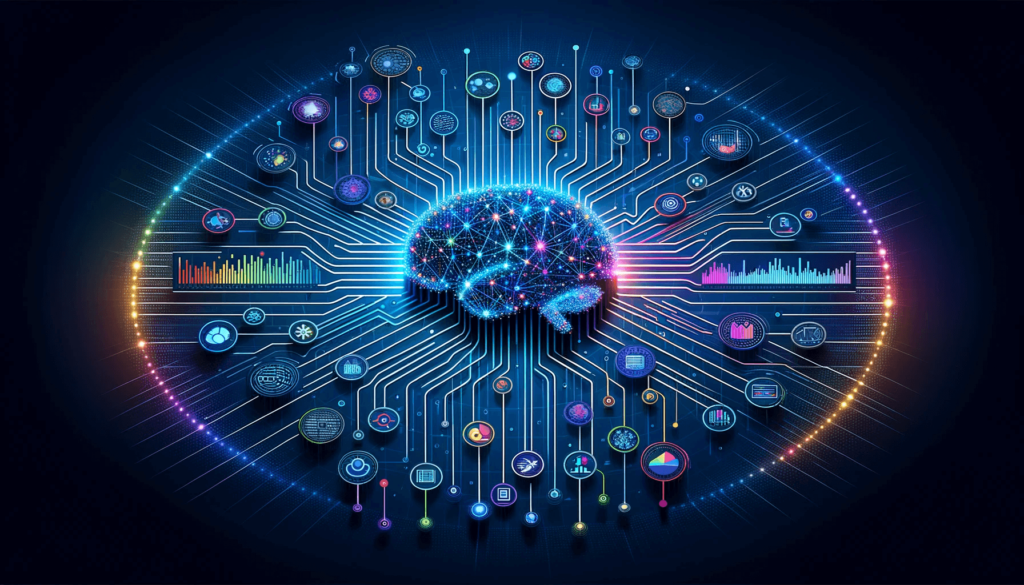
An intelligence image is a visual representation of data or information designed to help people understand complex concepts quickly and easily. It uses elements like charts, graphs, diagrams, and icons to convey information visually. These images are powerful tools in presentations, reports, and educational materials because they can simplify and clarify complex data.
This article is designed for individuals interested in the burgeoning field of artificial intelligence, particularly in its application to image generation.
Contents
Key Takeaways
- Intelligence images simplify complex data.
- They make information more engaging and memorable.
- Choose the right type of visual for your data.
- Keep the design simple and clear.
Why Use Intelligence Images?
Intelligence images are great because they make information more engaging and easier to understand. Here are a few reasons why you should use them:
- Clarity: They simplify complex data.
- Engagement: Visuals grab attention more than text.
- Retention: People remember visual information better.
- Accessibility: They make information accessible to a broader audience.
Creating an Intelligence Image
Creating an intelligence image involves several steps, from understanding your data to choosing the right visuals. Here’s a step-by-step guide:
Step 1: Understand Your Data
Before creating any visual, you need to understand the data you are working with. Ask yourself:
- What is the main point you want to convey?
- Who is your audience?
- What type of data do you have (numbers, trends, comparisons)?
Step 2: Choose the Right Visuals
Depending on the data, choose the appropriate type of visual:
- Charts: Great for showing trends or comparisons.
- Graphs: Ideal for numerical data.
- Diagrams: Useful for explaining processes or relationships.
- Icons: Good for highlighting key points or categories.
| Data Type | Best Visual |
|---|---|
| Trends | Line Chart |
| Comparisons | Bar Chart |
| Proportions | Pie Chart |
| Processes | Flowchart |
| Relationships | Venn Diagram |
Step 3: Use Simple Design Principles
Keep the design simple and clean. Here are some tips:
- Less is More: Avoid clutter. Use only necessary elements.
- Consistent Colors: Use a consistent color scheme to make the image easy on the eyes.
- Clear Labels: Label all parts of the image clearly.
- Readable Fonts: Use fonts that are easy to read.
Examples of Intelligence Images
Here are a few common types of intelligence images and when to use them:
Bar Chart
A bar chart is excellent for comparing different groups. For example, you can use it to show sales figures for different products.
Line Chart
A line chart is ideal for showing trends over time. For instance, you can use it to show how a company’s revenue has grown over the years.
Pie Chart
A pie chart is perfect for showing proportions. For example, you can use it to show the market share of different companies in an industry.
Flowchart
A flowchart is useful for explaining processes. For example, you can use it to show the steps in a manufacturing process.
Tools to Create Intelligence Images
There are many tools available to help you create intelligence images. Here are a few popular ones:
- Canva: User-friendly and offers many templates.
- Microsoft Excel: Great for creating charts and graphs.
- Lucidchart: Ideal for creating flowcharts and diagrams.
- Infogram: Useful for creating infographics.
Tips for Effective Intelligence Images
- Know Your Audience: Tailor the visuals to your audience’s understanding level.
- Highlight Key Points: Use icons or colors to highlight the most important information.
- Use Captions: Add captions to explain what the visual shows.
Conclusion
Creating intelligence images is a valuable skill that can help you communicate complex information clearly and effectively. By understanding your data, choosing the right visuals, and following simple design principles, you can create images that are both informative and engaging. Whether you’re giving a presentation, writing a report, or teaching a class, intelligence images can make your information more accessible and memorable.
I hope this guide helps you create fantastic intelligence images! Remember, keep it simple, clear, and engaging. Happy designing!